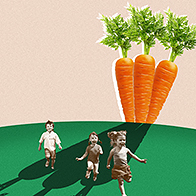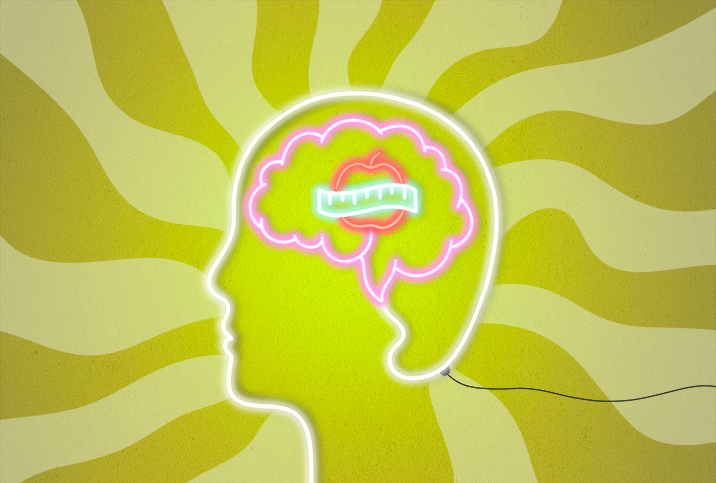ARFID Creates a Fear of Food in Children and Adults

Jemma Spiller, from Honiton, England, recently went on holiday to Greece. While there, her 7-year-old daughter, Lottie, ordered food off the menu and ate it all—for the first time. It was an event the 43-year-old mom had never thought possible.
Lottie had eaten whatever food was put in front of her until the age of 2½. Then something changed and she began eating only a selection of foods: her "safe" foods.
According to Spiller, Lottie was very brand-aware, eating only one certain brand of fries, bread, cereal and yogurt. Cheese had to be grated, apples needed to be red and bananas appeared in her selections only occasionally.
"She ate no vegetables, meat, fish, pizza, chicken nuggets, etcetera," Spiller said. "If we did try to get her to try a new food, she would shake in fear and become extremely upset. We tried everything, but nothing worked. I asked her a few times why she was so scared, and she said, 'It might make me poorly.'"
Spiller shared her concerns about her daughter's self-restricted eating habits with their general practitioner, but was left "feeling disheartened" after the doctor simply labeled Lottie a "fussy eater."
However, Spiller knew there was more to the story. This wasn't something Lottie would outgrow. Eventually, she would start to lack essential nutrients without proper intervention. Spiller decided to contact a pediatric dietitian at their local hospital.
"I left feeling deflated, as again, my concerns were not taken seriously," she said. "I did tell both my doctor and the dietitian I thought Lottie had ARFID [avoidant/restrictive food intake disorder]. They dismissed the idea."
Dreading social interactions
Avoidant/restrictive food intake disorder, or selective eating disorder (SED), is a lesser-known eating disorder with no link to body dysmorphia. While ARFID most often develops in early childhood, it can occur at any age as a result of a traumatic event, such as choking or illness. Associated illnesses may not even be food-related, but the trigger of vomiting can transfer into a fear of food.
ARFID sufferers have a very narrow repertoire of foods, often fewer than 15 items. While this condition can be harmful to health in the long term depending on what's on the list, nutrition isn't the only area of life it affects.
Dreading any social interactions that involved food, Lottie started realizing she was different from her school friends, Spiller explained.
"She would often cry and say that she wishes she was like them," Spiller said. "She became anxious at the thought of going to friends' parties, in case she was made to eat the food, or on play dates. I had to take Lottie's safe foods with us when we ate out as a family and even pack them in a suitcase when we had holidays abroad as she wouldn't eat the food in the hotels."
Along the way, Spiller faced judgment for allowing her daughter to eat whatever she requested instead of feeding her more nutritious food. Receiving advice such as "She'll eat if she's hungry" didn't help, because Spiller knew Lottie would rather starve than eat anything else.
Easy as 1, 2, 3
For Spiller and Lottie, help came from David Kilmurry, a cognitive behavioral hypnotherapist at the Kilmurry Life Centre in Coventry, England. Kilmurry offered a solution and better understanding, having experienced ARFID in childhood.
He explained that ARFID is a food neophobia, the fear of trying new foods. Imagine facing your biggest fear multiple times a day.
When someone has irrational thoughts about food and what it's doing to them, they struggle to process the food or even swallow it. The full enteric nervous system—from the throat all the way down to the bowels—gets stressed, Kilmurry explained. Theoretically, hypnosis helps a client get to a relaxed state, which allows cognitive behavioral therapy (CBT) to work on a deeper level.
After speaking to Kilmurry in May 2022, Spiller decided to go ahead with a two-hour Zoom therapy session for her daughter.
"Lottie was very excited at the thought of finally getting the help she so desperately needed," she said.
After the session, Lottie had to try a plate full of new foods, including pieces of carrot, cucumber, grape, strawberry, blueberry, red pepper, pineapple and cashew. They utilized the 1-2-3 test: Lottie had to try a small piece of food three times to get used to the taste and then rate the food from 1 to 10.
"With ARFID-related conditions, we often are so quick to tell ourselves that we can't do it," Kilmurry said. "And it's not really until you've given it a little bit of a fair judgment before you can do it."
Spiller was stunned and, eventually, overjoyed when that food selection passed Lottie's lips. After two sessions, Lottie's list is up to 33 different foods so far, and she is still keen on trying new tastes.
"We have noticed the anxiety around food has gone now, and she's willing to give anything a go," Spiller said.
In the case of an adult, who remembers what it was like to have a varied diet, hypnosis can bring back the previous relaxed state around food prior to the trauma.
"You were relaxed eating and you didn't have any thoughts of stress," Kilmurry said. "You weren't focused on it, you weren't hypervigilant [or] hypersensitive to it. So relaxation and hypnosis is very much a beautiful way of taking somebody into the 'rest and digest' relaxed state."




















